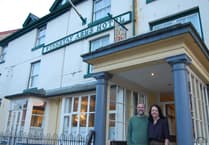A DROP-IN session is to be held in Devil’s Bridge to discuss developing heritage tourism in the Cambrian Mountains region.
Individuals, community groups and businesses from the Cambrian Mountains are invited to attend the session organised by the CUPHAT (Coastal Uplands: Heritage and Tourism) project.
It will take place in Canolfan Cymunedol Mynach Community Centre, Pontarfynach, Devil’s Bridge, on Friday 11 November 2022 from 11 am – 1 pm.
CUPHAT, supported by the European Regional Development Fund through the Ireland-Wales Cooperation programme, focuses on sustainable and regenerative heritage-based tourism in the coastal uplands of Ireland and Wales.
The project seeks to showcase the shared and distinctive heritages of the Cambrian Mountains and Preseli Mountains, and the Blackstairs Mountains and Wicklow Mountains in Ireland.
This event will offer local communities an opportunity to learn more about CUPHAT and share their views about heritage tourism development in their local areas. The CUPHAT project team will provide a short introduction to the project before opening the discussion to hear local views about the potential of developing businesses linked to local heritage, important local sites for tourists and the type of tourism development that would best support local communities.

The project lead, Professor Rhys Jones (Aberystwyth University), describes CUPHAT as “an innovative project directly involving all members of local communities and stakeholders in collaboration so that CUPHAT can 1) develop locally appropriate tourist activities that support rural economic development, 2) help address some of the challenges facing coastal upland communities, and 3) ensure that the kind of tourism promoted by the project is not just sustainable but also actively beneficial to the region.”
“We invite anybody who is interested to come along and find out more, meet with us and share their ideas. We want to learn from local communities about aspects of the cultural and natural heritage of the Cambrian Mountains that are most significant and meaningful to them and that could be better showcased to a tourist audience.”




